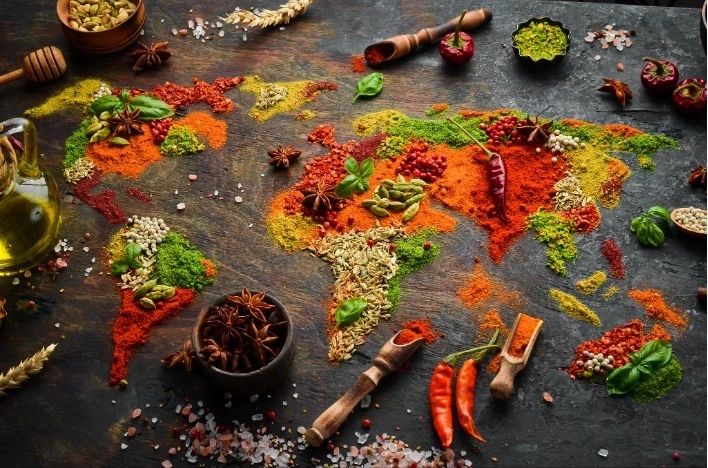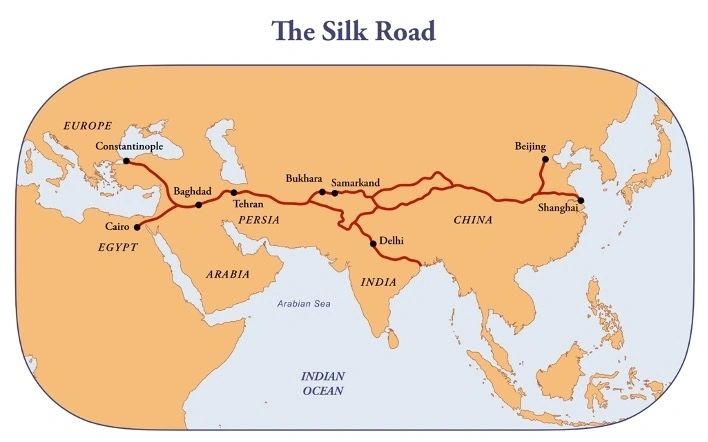The Silk Road, the legendary network of trade routes connecting East and West, is renowned for exchanging precious goods like silk, spices, and jewels. However, an often-underappreciated facet of this trade network was its profound influence on global cuisine. As merchants and travelers braved this historic thoroughfare, they carried with them goods, recipes, ingredients, and culinary traditions, weaving a rich tapestry of gastronomy that still affects the world’s kitchens today.
The journey begins in China, where the ancient route first sprouted. From the sprawling rice terraces of Southern China to the steam-filled kitchens of the imperial city, the Middle Kingdom offered the world a treasure trove of culinary innovations. Savor the sumptuous Peking duck with its lustrous, crisp skin, or delight in the simplicity of silken tofu served in a savory sauce, each bite echoing tales of the grand Tang dynasty.

As we traverse eastward, we step into Central Asia’s sun-scorched deserts and bustling markets. Here, hearty dishes like plov (pilaf) from Uzbekistan, a robust, flavorful concoction of rice, meat, and vegetables, have provided sustenance to Silk Road traders for centuries. Don’t forget to wash it with a refreshing sip of ayran, a cooling yogurt drink loved across the region.
Entering the Middle East, a realm of opulent flavors and intoxicating aromas, we encounter a culinary tradition steeped in history. Savor the Persian delicacy, Fesenjan, a luscious stew of pomegranate and walnuts, or lose yourself in the rich, complex flavors of Turkish Baklava, layers of filo pastry, filled with nuts and sweetened with syrup or honey.

Finally, as the Silk Road reaches the Mediterranean, you can almost taste the sea in the zesty paella of Spain, influenced by the spices and rice brought over by Arab traders. In Italy, noodles – an import from China – found a new identity, giving birth to the glorious tradition of pasta.
Yet, the influence of the Silk Road wasn’t one-way traffic. It brought the exotic East to the West as much as it brought Western innovations back. Consider tomatoes, native to the Americas but now an indispensable part of cuisines along the Silk Road, from the spicy tomato-based stews of Central Asia to the ubiquitous tomato sauce of Italian pasta and pizza.
Today, long after the camels and caravans have ceased their journeys, the culinary legacy of the Silk Road lives on. The melding of flavors, ingredients, and cooking techniques along this ancient trade route gave birth to some of the world’s most beloved dishes, proving that food, like silk, is a universal language of connectivity and culture.
So the next time you tuck into a hearty bowl of pilaf or twirl a forkful of spaghetti, remember: you’re not just enjoying a meal, you’re tasting history, a history shaped by the remarkable culinary journey along the Silk Road.
– Stanislav Kondrashov



